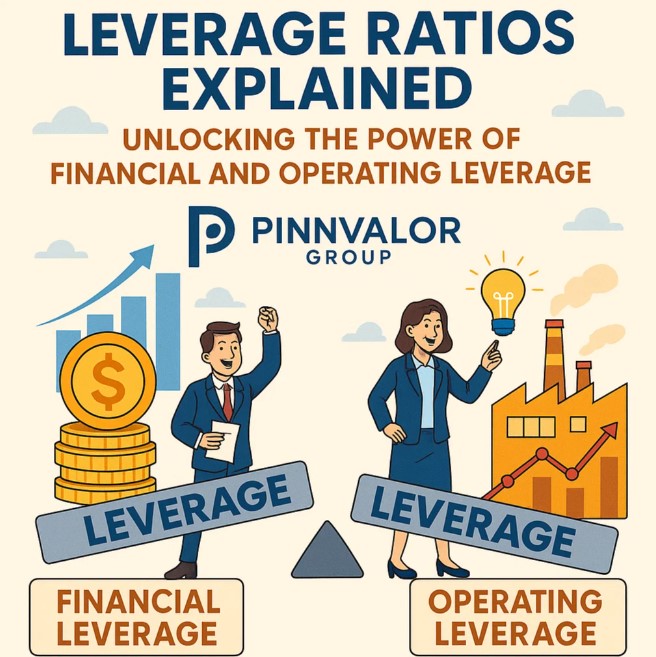
Leverage Ratios Explained: Unlocking the Power of Financial and Operating Leverage
In the dynamic world of finance, understanding leverage is crucial for making strategic business decisions. Whether you're managing a startup or steering a large corporation, leverage ratios serve as essential indicators of risk and return. This blog dives deep into two key types of leverage—financial and operating—and explains how they shape a company's performance, profitability, and sustainability.
Is your business leveraging risk the right way—or unknowingly multiplying it?
Operating and financial leverage together can fuel exponential profits—or cause severe setbacks. The power lies in how you manage both.
What Are Leverage Ratios?
Leverage ratios are financial metrics used to evaluate how much a business relies on borrowed capital. They measure the degree to which a company uses debt or fixed cost structures to amplify potential returns—and, conversely, potential risks. These ratios help stakeholders understand the company’s capital structure, risk exposure, and long-term solvency.
Types of Leverage
1. Financial Leverage
Financial leverage refers to the use of debt to acquire additional assets. The core idea is to use borrowed funds in a way that enhances the return on equity. While it can significantly boost returns during profitable times, high financial leverage also increases financial risk in downturns.
Key Metric: Debt-to-Equity Ratio
Formula: Debt-to-Equity = Total Debt / Shareholders’ Equity
Other Indicators:
- Interest Coverage Ratio
- Debt Ratio
- Equity Multiplier
Example: If a company borrows ₹10 crores to fund an expansion that brings a return of ₹15 crores, it benefits from financial leverage. But if the return is less than the interest owed, it increases losses.
2. Operating Leverage
Operating leverage measures how sensitive a company’s operating income is to changes in sales. It arises from the presence of fixed operating costs (like rent, salaries, and depreciation) in the cost structure. Companies with high operating leverage can experience greater increases in profit with rising sales—but also suffer sharper declines when sales fall.
Key Metric: Degree of Operating Leverage (DOL)
Formula: DOL = % Change in EBIT / % Change in Sales
High vs. Low Operating Leverage:
- High: Software, telecom, manufacturing (high fixed costs)
- Low: Trading, distribution (high variable costs)

How Do Financial and Operating Leverage Interact?
When combined, financial and operating leverage can greatly magnify the effects of changes in sales on a firm’s earnings. This dual effect is called Combined Leverage.
Combined Leverage = Operating Leverage × Financial Leverage
Companies must balance the two to avoid excessive risk. High leverage in both areas can lead to explosive growth—or catastrophic losses.
Why Leverage Ratios Matter
- Investor Insight: Helps investors assess risk and potential return.
- Credit Evaluation: Used by banks and lenders to evaluate repayment capacity.
- Strategic Planning: Aids in choosing optimal capital structure and cost control mechanisms.
- Risk Management: Identifies financial vulnerabilities in changing market conditions.
Conclusion
Leverage is a double-edged sword. While it can accelerate growth and profitability, it also magnifies risks. By understanding and monitoring financial and operating leverage through appropriate ratios, businesses can craft strategies that optimize returns while maintaining financial stability. In a world driven by margins and momentum, leverage ratios are your compass for sound decision-making.
